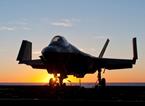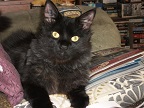Yokes
Posts: 298
Joined: 3/14/2007
Status: offline

|
quote:
ORIGINAL: ckfinite
quote:
1. Area ruling is messed up by that extra volume. Poor area ruling causes a large drag rise in the transonic region of flight, which happens to be where most air combat takes place.
However, the internal stores really make up for most of that.
That article is looking at drag counts and is not talking about area ruling at all.
Speaking of external stores, they are (almost universally) hung under the wings, near the middle of the aircraft, so they have a smaller impact on area ruling. The airplane is already "fat" there, so a little more "fat" doesn't make much of an impact. The problem with the F-35 is that it goes from "pointy" to "fat" really quickly since it has to make room for the lift fan right behind the cockpit.
quote:
quote:
2. The wing is too small. This came from keeping the weight down for the STOVL version. If you look at the equations that define many of the important aircraft performance parameters (rate of climb, cruise range, sustained turn rate, etc.) they all contain wing loading (weight/wing area) as a parameter. In general, high wing loading = poor fighter performance. (There are some exceptions.)
Not really - if this had been a problem the F-35A could have had the F-35C's wing. The C's wing has the major issue of limiting the aircraft to 7.5g instead of 9g, but this is missing the point a bit. The F-35 uses large internal bays for munitions (look at the cutaway diagram to see them) so the fuselage width is much wider than the traditional wing loading metric accounts for. When you add this in, the wing loading then becomes comparable to that of the F-16. As it turns out, E-M doesn't really account for a lot of modern aerodynamics, since it assumes that the wings of the aircraft describe a very simple shape and that there are no other lifting surfaces.
The F-35C's wing is still too small. It's wing loading is still too high.
As far as considering the F-35 a "lifting body" (as the article you cited argues) and therefore the EM methodology is bunk, well, we would also have to consider all the other fighters with a flat bottomed fuselage as a "lifting body" as well, right? So does anyone think the traditional EM computations for the F-14, F-15, Su-27 are wrong? No. Why? Because while it is true that a flat-bottomed fuselage does generate some lift, it turns out to be a very inefficient way of producing lift. (It tends to be draggy.) So designers usually try to minimize the lifting aspect of the body since it causes drag. (The pitching moment created can also cause issues with high-AOA pitch stability.)
In summary, the simple computation of wing area that ignores the fuselage's contribution is not as accurate as one that does take it into account, but it doesn't actually change the answer very much. That's why people have continued to use that method to compare F-104s to F-15s and the comparisons still come out pretty accurate.
quote:
quote:
I sure did read those reports. To me, the most important section is the "Energy Management" section.
What was particularly notable to me was the reasons stated for the conclusion, namely that the pitch and yaw rates were insufficient. When you read back in the report, these reduce to control law problems, as the FCS was able to reach high pitch/yaw rates when challenged.
More from the report:
quote:
The EM of the F-35A is substantially inferior to the F-15E with PW-229s due to a smaller wing, similar weight, and ~15,000 lbs less in afterburner thrust.
No mention of yaw or pitch rates in that statement, which is speaking directly to the cause of the EM deficiency.
quote:
Insufficient pitch rate exacerbated the lack of EM.
I read that to say the EM was bad, but the lack of pitch rate made it terrible. Fixing the software will improve it from terrible to bad. Yay?
quote:
quote:
But you can't fix EM with software.
You can screw up EM with software, which is what they seemed to do according to the report.
The report seemed to say the software made the EM deficiency worse, not that it was the cause of it. EM is a product of aerodynamics, and software can't change the laws of aerodynamics.
Yokes
|
 Printable Version
Printable Version







 all-in-one fighter study, and Lockheed Martin pulled off the most masterful "too big to fail/porkbarrel politics" campaign of all time, and presto: F-35 today!
all-in-one fighter study, and Lockheed Martin pulled off the most masterful "too big to fail/porkbarrel politics" campaign of all time, and presto: F-35 today! 






 New Messages
New Messages No New Messages
No New Messages Hot Topic w/ New Messages
Hot Topic w/ New Messages Hot Topic w/o New Messages
Hot Topic w/o New Messages Locked w/ New Messages
Locked w/ New Messages Locked w/o New Messages
Locked w/o New Messages Post New Thread
Post New Thread